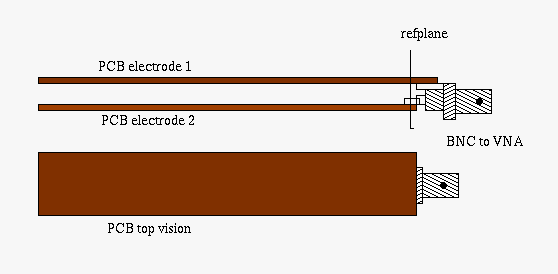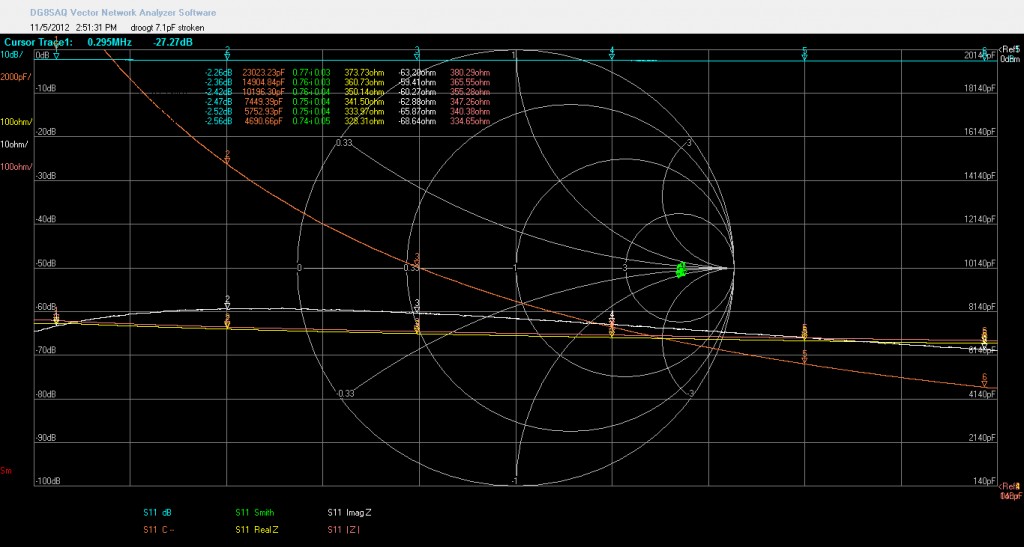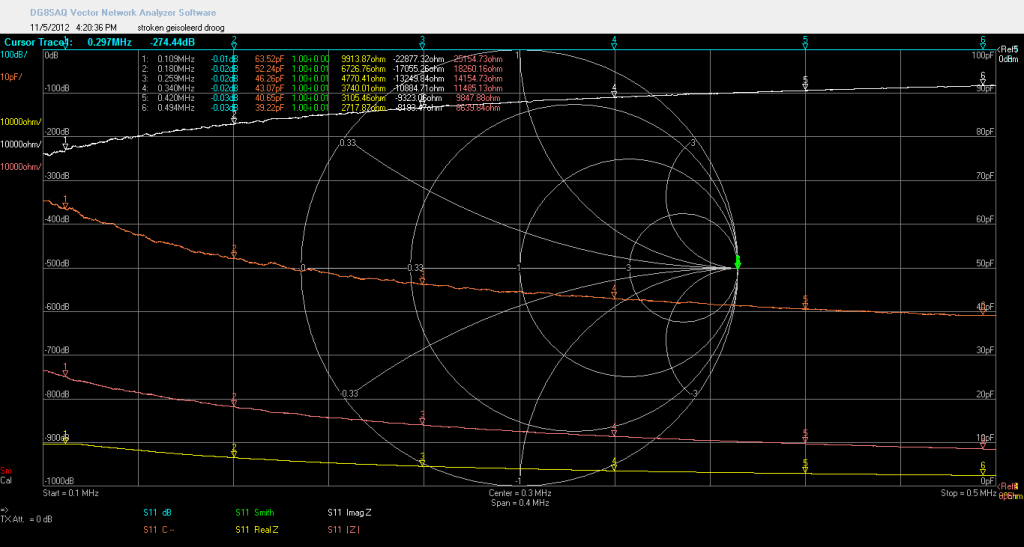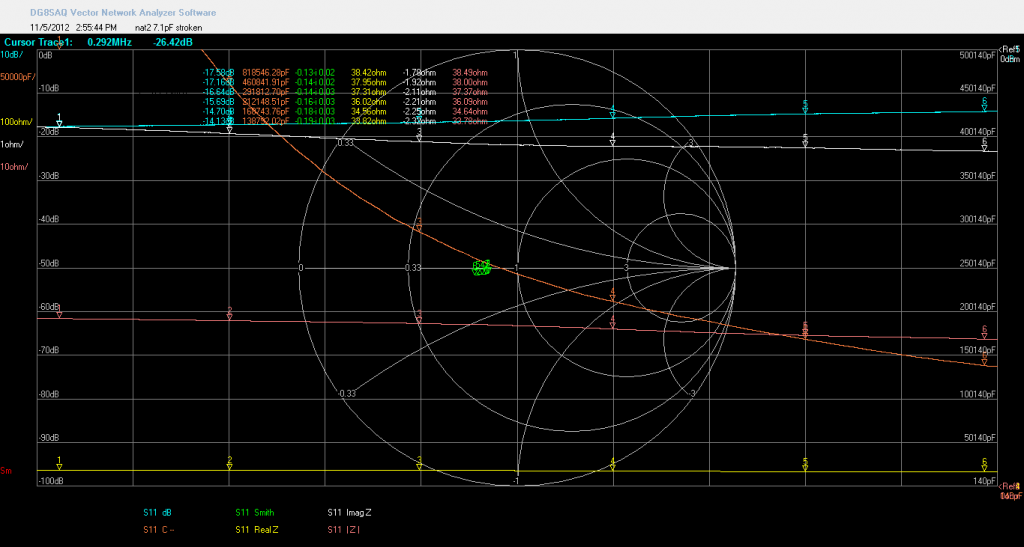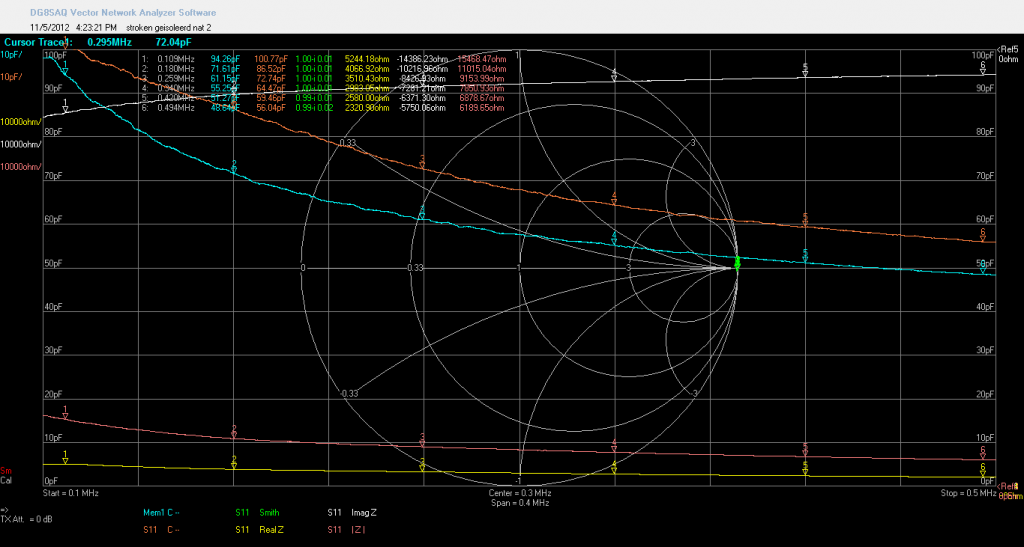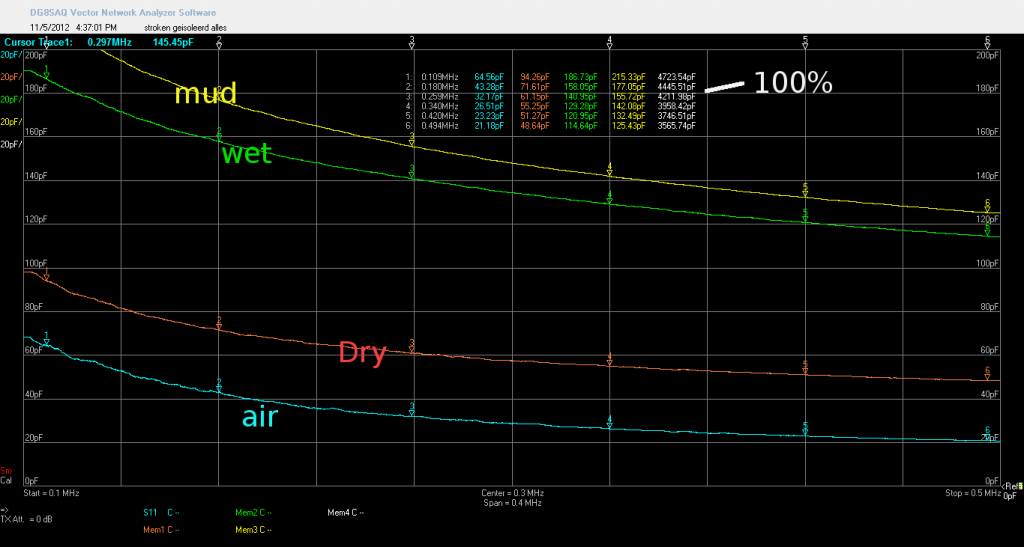Just a fun experiment to see if a capacitive sensor is a way to determine if a plant needs more water.
I made this very quick and dirty probe.
It is not the right way if you want to measure it correct. The plastic bags are not ideal and the plates are not fixed so it is possible the distance changes but it is just an exeample. This way you could make an oscillator with the capacitive probe as part of the tank. If the soil drys the capaciance decreases so the frequency increases.
See the difference:
First in dry (moist) ground without a plastic bag around each probe :
Then with isolated probes:
You see a huge difference. First the unisolated probe. The real part is a few hundred Ohm due to the conduction of some water still in the sand. And capacitance is high, 4.6-3nF
The isolated one that is a real capacitor this way is an other story, The real part is very high, this is the ESR of this capacitor, so soil is not an ideal dielectrium. But the capacitance is much lower as unisolated, 63-39pF and a lot ( as a reference 64-21 pF is the value with air and the plastic bags as dielectrium )
This is the not isolated probe in wet mud, to much for your plants. Capacitance is very high but the real part is very low due to the water. But the problem is when you use pure water the capacitance and real part are lower so this is not very usable.
This is again isolated, the capacitance is now 100-56 pF. So you could poerfect use it for an oscillator. The capacitance change between to dry and to wet is around 30 pf.
Here I did it again but now the isolated probe was in a new jar. First no sand, then pure water, the without the water but with sand, then I poored water to the sand. The traces are put in memory so you see the rise in capacitance for the same setup.

